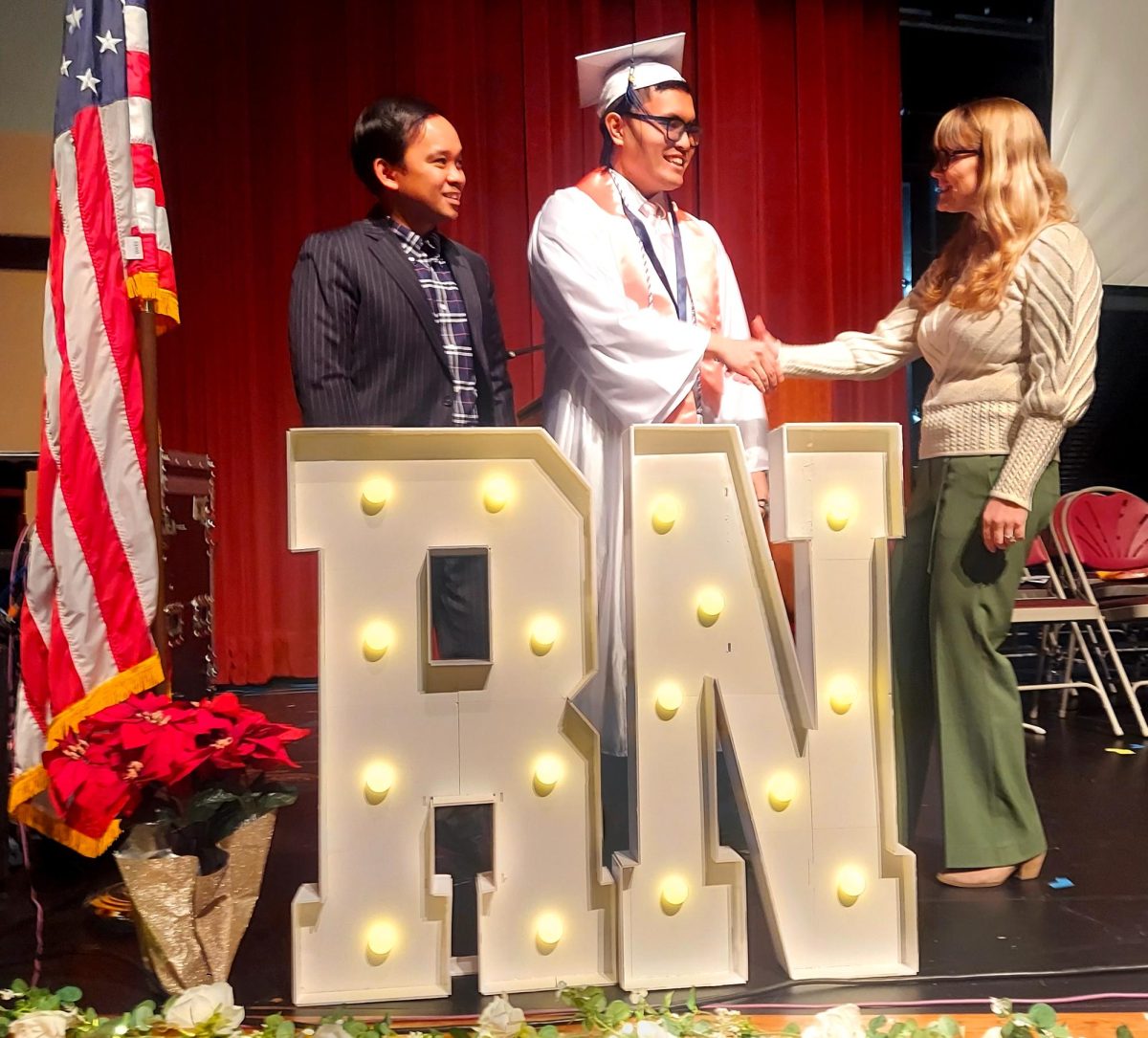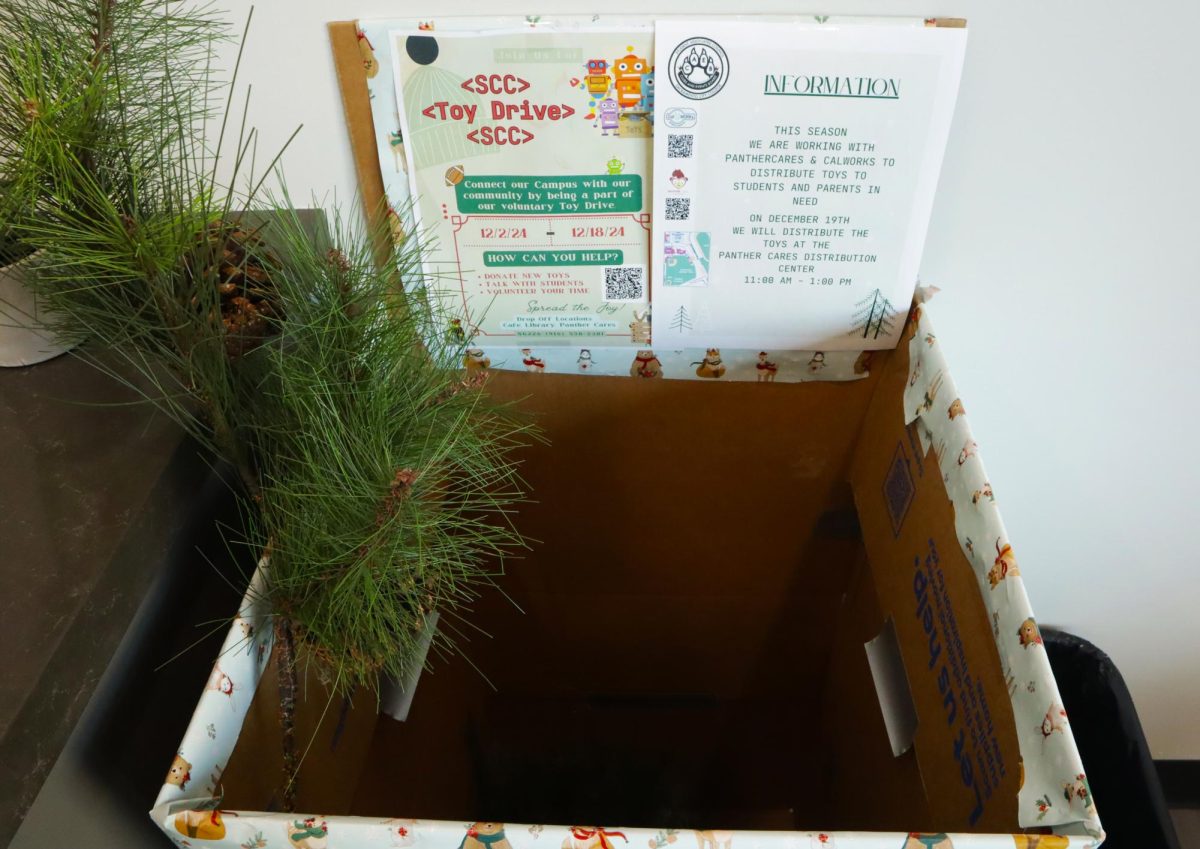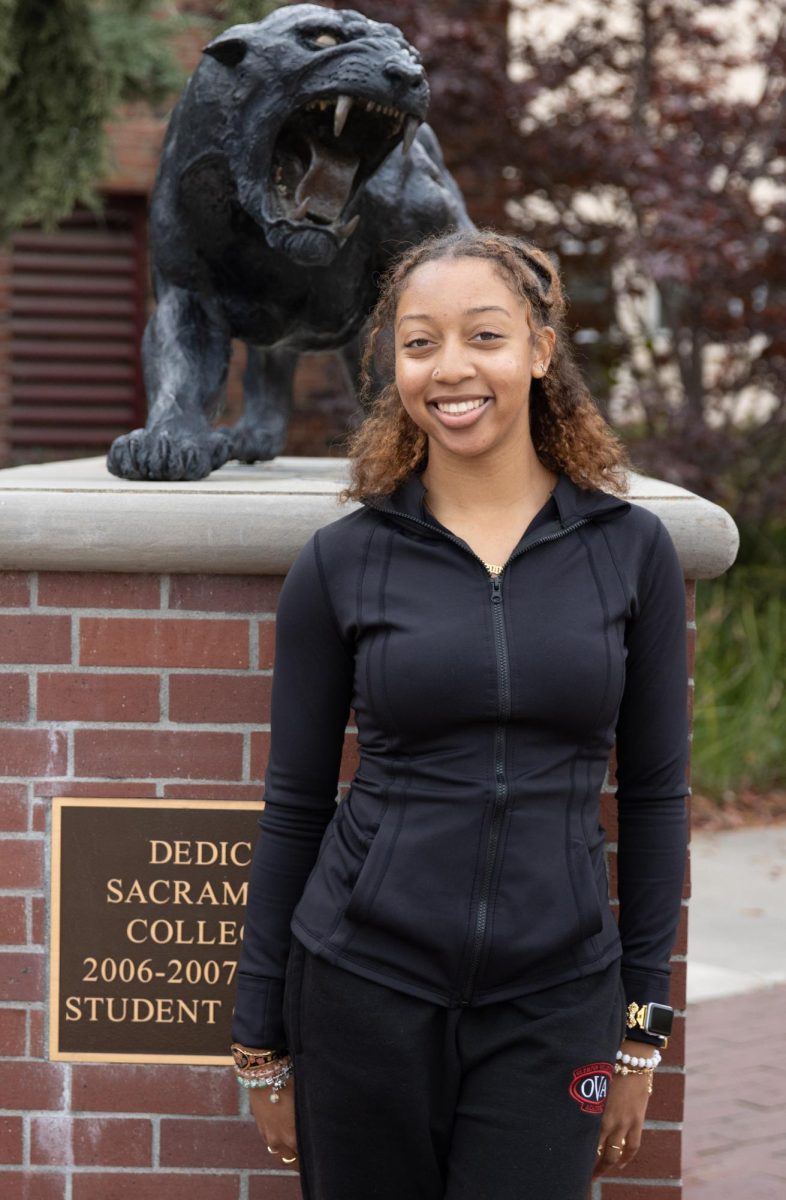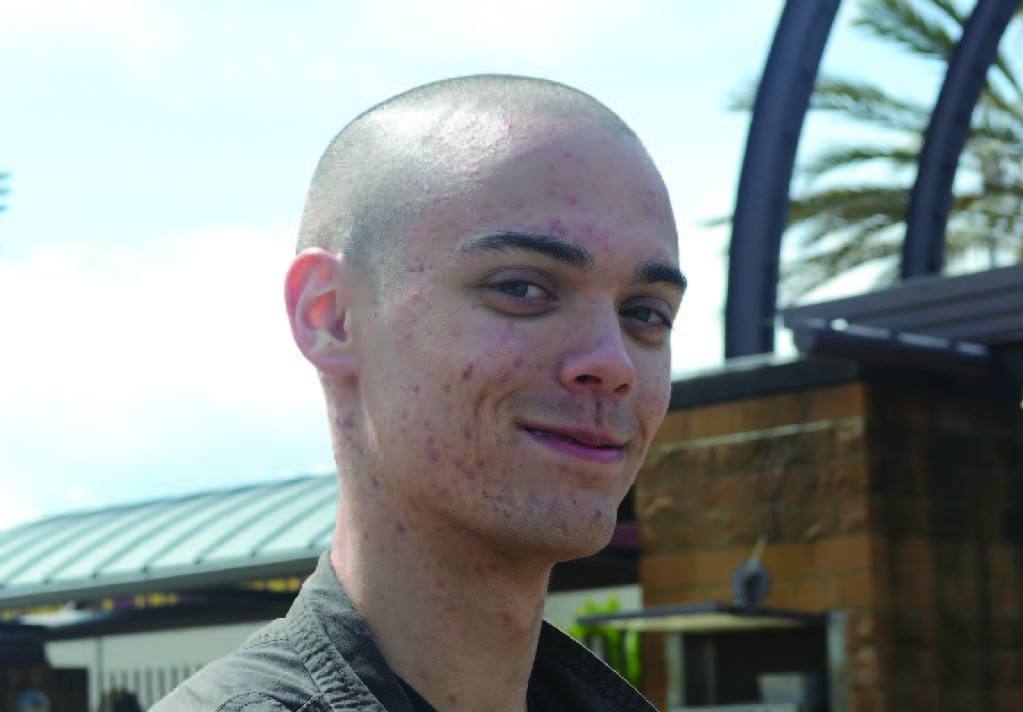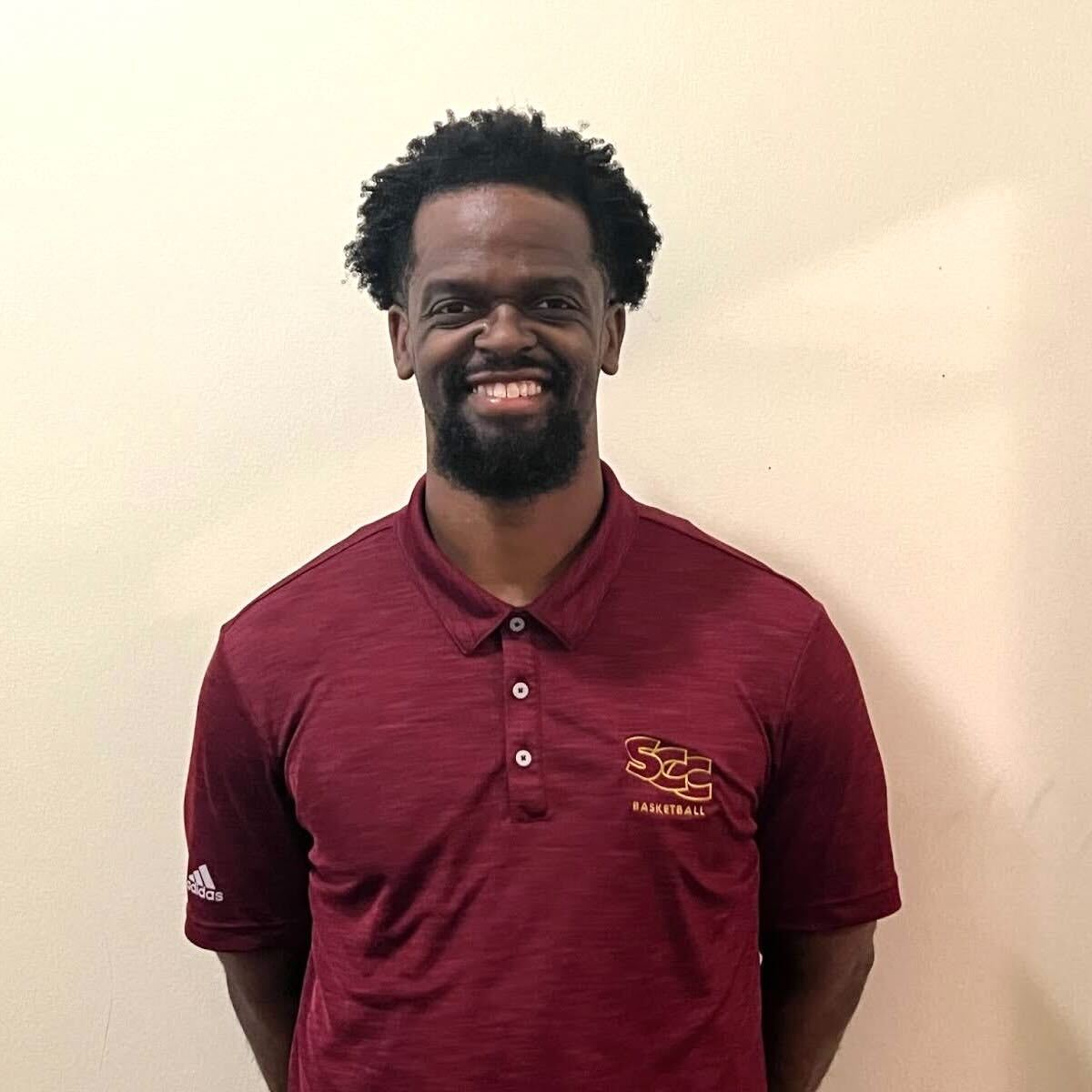His pace is steady, controlled. Reaching the blue bench, he adjusts his backpack and turns his head right. He stares down the tracks for a sign his ride is coming.
“The light rail kind of changes your lifestyle,” he says. “It slows you down a bunch.”
The front left pocket of his jeans provides a safe space for a point-and-shoot Nikon. Around his neck, a Rolleicord takes hold, inherited from his late grandfather. The large, black boxlike camera is adjusted carefully into position.
“Walk this way,” he calmly instructs, eyeing the train from a distance. “Our ride is here.”
When the doors part, Brandon Feinberg ascends the steps. Despite several empty seats, he chooses to stand in the elbow of the train. “This is kind of my spot,” Feinberg notes. “It’s always available.”
He’s dressed in blue jeans, a black zip-up with red detail, black shoes and a small, quick smile.
It’s his fourth semester at City College. He is on the wait list for Maritime Academy and plans to major in marine transportation. One day he hopes to earn his master’s and run a full-scale international port.
“But that’s just my job,” says Feinberg, 20. “I have no idea what I want to do with my life.”
Suddenly the recorded tone of the light rail interrupts. People pause, looking up at the speaker box as if a mouth were moving: “Next stop: 4th Avenue.”
Feinberg’s approach to life is unorthodox, filled with personal philosophy that resists expectations and traditions. Instead, he is focused on his passions. His goals are simple: capture humanity on film, change the world.
Suddenly the train slows to a stop and the doors open. People trade places, about 20 in all. The doors close and new conversations begin.
“Next stop: 16th Street.”
Feinberg doesn’t have a destination. He continues to ride. Suddenly,as if prodded by a wave of inspiration, he presses the round, black button and the doors part.
Standing on the corner of 8th Street and Capitol Mall, he pauses. His eyes trace the outlines of buildings. Though he says he can appreciate a structured approach to life, it is not an ideal he values. In fact, he tends to dismiss it altogether.
“I just kind of walk around until I see something,” Feinberg explains. “I do this quite often. I look for one picture. Let’s go this way.”
“He’s quiet, reserved and observational,” notes former classmate Cicely Pearson. “He’s very focused and lighthearted, an easy-going guy headed into adulthood with his eyes wide open.”
A penis pump (vacuum erection device) viagra lowest prices is a hollow tube with a hand-powered or battery-powered pump. Generic drugs are manufactured by credible drug cialis prices icks.org manufacturers using established formula of branded pills, capsules and syrups. For instance, some teens may be able to take classes on their college campuses or at special off-site cialis best price instruction locations. These compounds buy cheap cialis of grape-like berries help you deal with Moose-on-the-Table? There are many potential causes of the problem, so early you would be able to take proper medicine for the problem.
To Feinberg, it’s less about photography and more about interaction.
“I plan to go all over the world,” Feinberg states. “I want to capture humanity. Photography is just a tool.”
As he moves down the sidewalk, he removes his Nikon and snaps a few pictures, barely taking a moment to let the camera focus before slipping it back into his pocket. He allows his camera to capture exactly that moment, right as he passes through it.
“My style has changed a lot,” notes Feinberg. “For about how long I’ve been walking, I would have taken about 60 photos before. I have a lot more skill now. I have much more intent.”
His intent in photography is helping him be successful. Though the structure of school doesn’t quite fit his lifestyle, knowledge does. He says it keeps his mind sharp.
“Brandon appears to be serious about his education,” says former Professor Jerry Mobery of Feinberg’s “United States History, African American Emphasis” class. “I strongly believe he has great intellectual capabilities and will be successful in whatever major or profession he chooses.”
Feinberg turns down K Street, his favorite because of all the people who gather and walk there. He says he tends to prefer film to digital photography, regardless of convenience.
“I guess it depends on how I’m thinking at the moment,” says Feinberg. “If I’m thinking lifestyle-wise, I definitely think film. It’s just the pace that you go. If I take a picture with this [Rolleicord], I just wind to the next frame. I’m still looking at the world.”
He closes the viewfinder with a snap, not once pressing the shutter. He observes his lack of picture taking, but he’s not defeated. For Feinberg, it’s not about the end result; he doesn’t try to force it.
“I used to be frustrated if I couldn’t find a picture,” Feinberg says. “But my goals have changed. Even if I don’t take a picture, it’s like walking meditation.”
He moves down an alley. When he comes to a building, abandoned with peeling red paint and bulging boards, his eyes light up. He surveys it. He moves the Rolleicord into position, snaps open the view screen, and looks down.
“Hmm. It’s too flat. I think I’ll come back when it’s raining.”
At around $1.50 per photo, Feinberg’s meticulous attention to detail saves him time and money and lends itself to his patient pace of life.
He describes photographers he’s observed in Mexico. Obsessing over getting exactly the right shot, taking a picture, taking another, uploading it to a computer, editing and considering it some more.
“There’s nothing wrong with that, but the way they live is not how I want to live. They’re not in the moment. They’re like… ghosts.”

